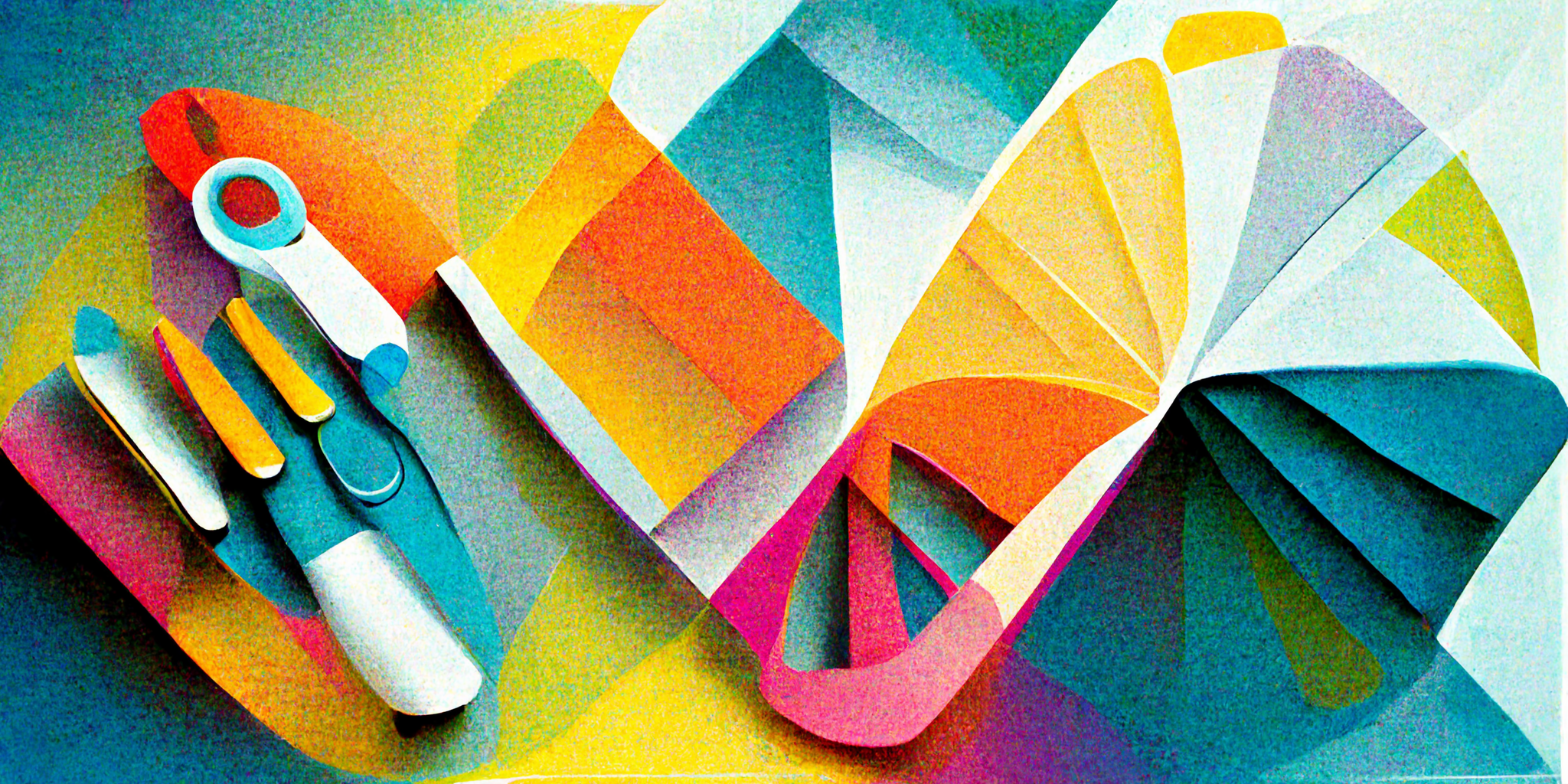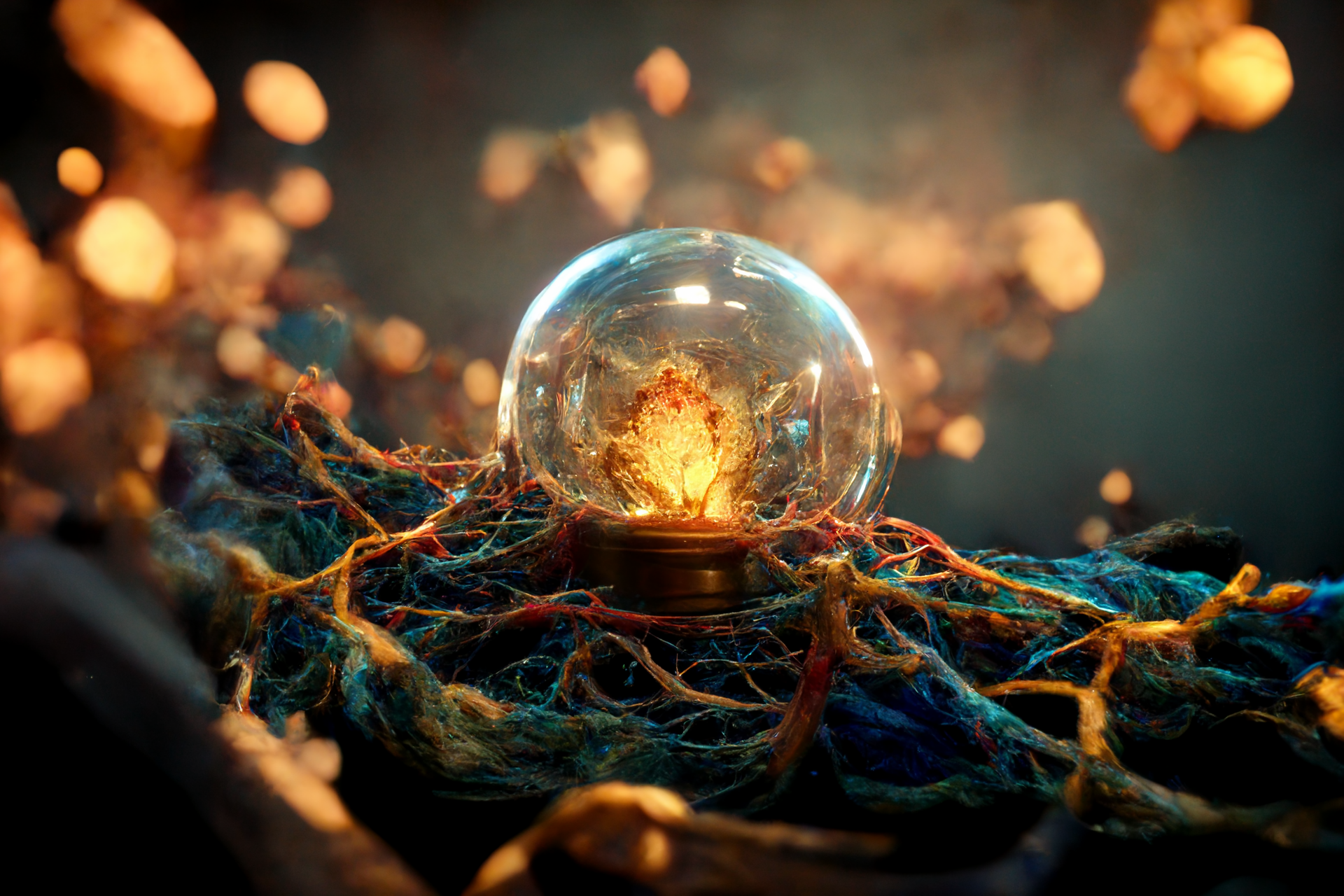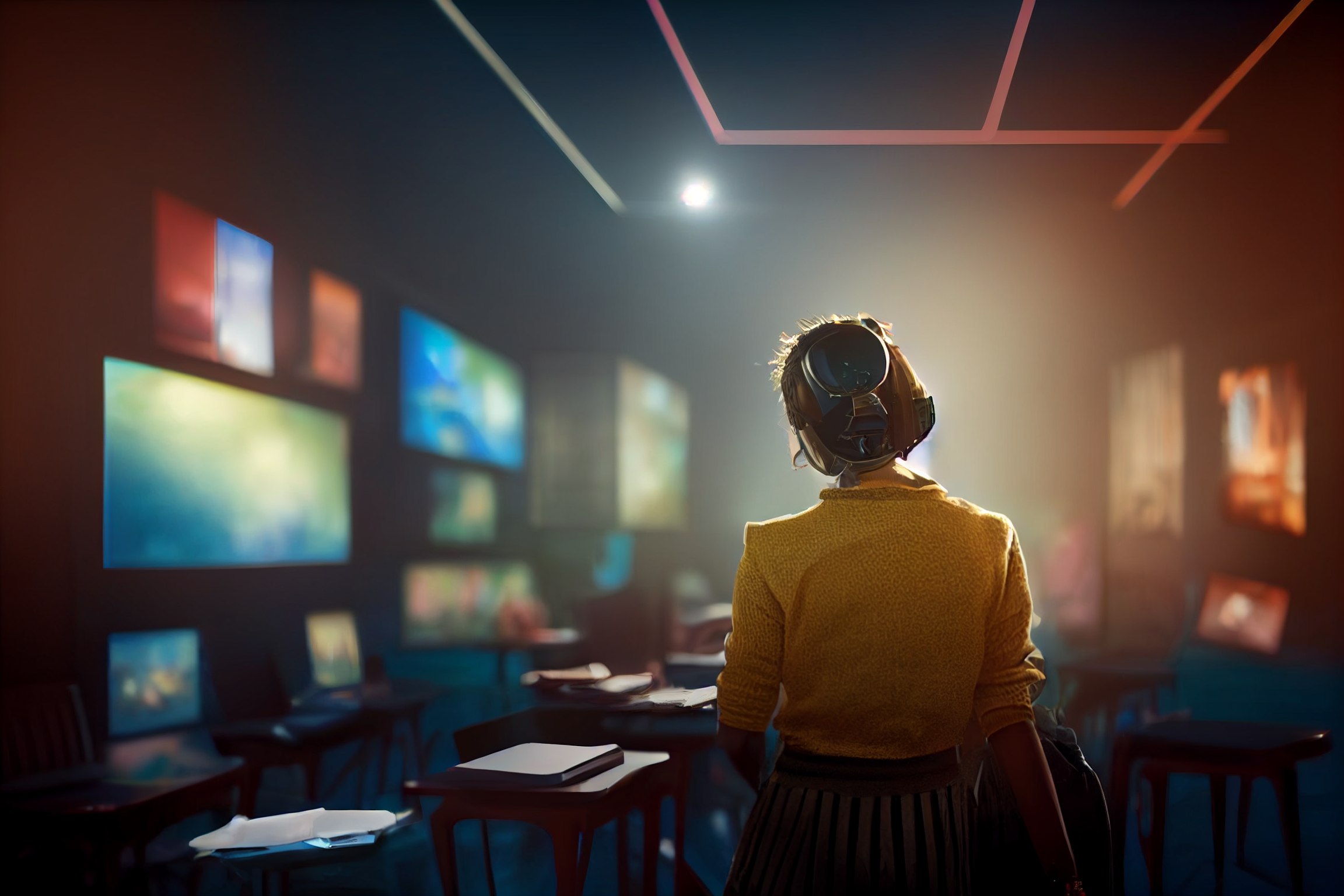In anticipation of the Week 9 OER on Artificial Intelligence coming soon from Safa’a, Seime and Sage, I wanted to share with you my immersion over the last couple of days with the most impressive technology that I’ve encountered in a decade. Yes, I’ve collaborated with an AI, and you and your students can too.
The AI in question is an Art-Bot called “Midjourney“, which you can play with for free (subscriptions start when you become addicted – which you will! – as I have) by going to the Discord.com community and from there to the Midjourney channel, and then clicking into any of the Newbie streams you’ll find there.
Midjourney is an AI-ArtBot, which means it will create totally original art for you on any subject you can dream up, and in any style or digital format you wish. Literally all you need to do is type in a few words to describe what you want, and possibly a few supportive commands, and less than a minute later you’ll be blown away by ‘your’ creativity. Gone is the adage that “a picture is worth a thousand words” – a half-dozen or less are plenty for the AI to run with. Some examples are appended below.
Some thoughts:
- Quality – I’m not any kind of artist but I’m sure even professional artists will be humbled, daunted and inspired by the power of this technology. These tools, as they mature, will absolutely, irreversibly disrupt the entire art industry, as well as the broader fine art world.
- Stupidity – The best reason to use this AI is to experience what it is like to collaborate with one in today’s world. It is frustrating trying to get exactly what you want, mostly because the simple interactive communication to enable this isn’t available yet. The AI and its users have different kinds of stupidity. But this is a very young tool and we can expect the AI, at least, not to be stupid for long.
- Understanding – If you look very closely at the images the AI creates, it is immediately clear that nothing is real – every original is like a Frankenstein’s monster, stitched together from spare parts to give you what the AI thinks you want to see. The results are typically spectacular – they will fool anyone who doesn’t look too closely. The AI knows a lot about Art, but almost nothing about Reality.
- Opportunity – My mind has been sparking with prospective ventures arising from this tool. I’m confident its developers began with a very narrow intent and could never imagine the breadth of potential applications. Think about where and how it might become valuable in new ways in your hands.
- What’s Next? – AIs are transforming the world around us, but mostly in invisible ways – this AI is a rare opportunity to collaborate directly with one to understand the incredible capacity it has, to feel empowered by the unprecedented capability it bestows on you, and to reflect on your future, and your students’ futures, as other AIs will inevitably enter every domain of our experience. Try this out with your students – I had a great time yesterday with some 6 and 8 year-olds.
Thoughts and questions welcome. And OK, yes, I’ll try to get back to grading your A1s now…
David
**************************
Below, and with feature image for this post, are images that the AI created for me based on a very words describing our course:




Thank you for sharing, Dr. Vogt. I just logged into Discord for the first time, made my way to Midjourney, and created an image set using the prompt ‘poetic picasso with monet and andy warhol.’ [if anyone is wondering if they should go do this — you should]. This tool is pretty mind-boggling, and it was super interesting to scroll through the many creations of other users. I am having coffee with my cousin-in-law who is an artist, and I showed her the tool. Her first response was “but this is cheating,” which I totally understand. How do we make sure a tool like this stimulates creativity in a student instead of hindering it? I think this is a really neat opportunity to get students curious and inspired, and as you mention, experience interacting with an AI, even if it may end up causing frustration. As I am very new to AI concepts, I am looking forward to week 9’s OER and will be keeping Midjourney in mind as I engage with its content.
Appreciated, Kendal.
I’m willing to bet that any true artist who works with this AI for a while won’t be worried for their living – in fact, I further bet that they’ll be excited by how it can accelerate their exploration, ideation and production. But IMHO it isn’t anywhere ready (yet) to compete with a true artist. For as far into the future as I can imagine, the best application of AIs will be to accelerate human invention, not replace it.
For all of us, students included, the most interesting inspiration may be within the power of words and language. How much time do we spend trying to help students understand how to use words creatively to tell a story? With this AI the analogous challenge is to employ words to conjure an image, to render a dream. It is the very essence of semantics; I believe it is exactly how the brain works when it distills the semantic flow of existence from our experience of reality, and then recombines these elements through memory, understanding and dreams.
But maybe that’s too deep. The simple truth is that this is a genie that is now out of the bottle, and can’t be rebottled, and presents opportunities (and challenges) for all of us, so education is a perfect place to figure out what those are.
This post about AI and Midjorney make a difference in my presentations. As a clinical oncologist, I have regularly been invited to congress and meetings. I must confess that I can’t stand my Powerpoint background slides or slide master suggested by event sponsors. I have been searching for some original and artistic to point out my presentations. Inspired by your post, Dr. Dvid Vogt, and with the help of an artist, Eduarda Paniz de Oliveira Souto, we used Illustrator and Procreate for the digital graphic design of complex anatomic structures, such as a peritoneal cavity and bowel.